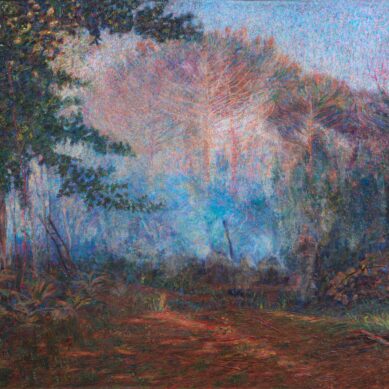You searched
Painter
Adriano Baracchini Caputi
Are you interested in the sales or the purchase of his artworks?
We buy works of this artist
and of other painters and sculptors from the 16th century to the first half of the 20th century
The Berardi gallery offers a free and without obligation service for evaluation of ancient and modern art . To find your way in the art market, very complex and full of nuances, it is better to rely on a professional consultant who can answer fast and concretely to your needs. The clarity of the answers will resolve effectively the need to estimate or sell an asset.
Contact us immediately without commitment
Answers also in 24 hours:
Adriano Baracchini Caputi
Adriano Baracchini Caputi
Adriano Baracchini Caputi was born in Florence in 1883, and at the age of sixteen moved to Leghorn, where he followed the teachings of Guglielmo Micheli, a Macchiaioli-style painter and pupil of Fattori. A frequent visitor to the Caffè Bardi, Adriano Baracchini Caputi came into contact with Divisionist art and the artists who gravitated around this movement, especially Vittore de Grubicy de Dragon and Benvenuto Benvenuti.
Vittore de Grubicy de Dragon played a fundamental role in the spread of Divisionism in Leghorn, he was a Milanese painter, but also a gallery owner and promoter of young talent who would leave a strong imprint on the Tuscan city.
The exhibition success of Adriano Baracchini Caputi
After an initial verista period, following the last Macchiaioli painters, Adriano Baracchini Caputi quickly became one of the leading interpreters of Divisionist painting and was invited to the Salon des Peintres Divisionnistes Italiens held in Paris in 1907, participating with landscape paintings, now lost.
In Italy, the artist had already participated in several exhibitions: he was a guest at the Florence Exhibition in 1902 with the work Studio in porto; the following year he participated with Impression; and in 1903 he exhibited three works Molo mediceo at the Genoa Exhibition. Livorno, Cavalcavia d’antico castello and Impressione dal vero. In 1904 he returned to exhibit in Florence with La quiete del vespero. Adriano Baracchini Caputi also participated in several editions of the Venice Biennale: in 1912 he exhibited Mattino sul mare; in 1914 Sinfonia Crepuscolare; and in 1922 Un aurora.
He continued to exhibit in various cities: in Genoa he participated in the 1912 Exhibition with Mattino d’inverno and Sera alla fine dell’inverno. The following year he was instead in Naples participating with Pomeriggio di primavera and Sera nel porto. The painter also forged relations with the Secessionists and was one of the artists participating in the four editions of the Roman Secession: in 1913 he exhibited When Night Falls; in 1914 Towards Sunset and Winter Radiance; in 1915 Country and Last Splendours; and in the last edition of 1916 he exhibited Rain and Sunshine.
The foundation of the Labronico Group
Adriano Baracchini Caputi is very attached to Livorno and its Tuscany, and in 1920 he was one of the founders of the Gruppo Labronico, a group set up with the intention of enhancing Livorno art and the link that art has with this city. This idea took shape at Gino Romiti’s studio, and the artists who joined included our own Adriano Baracchini Caputi and many others, such as Carlo Romanelli, Cesare Tarrini, Giovanni Zannacchini, Renato Natali, Goffredo Cognetti, Corrado Michelozzi, Gino Cipriani, Gastone Razzaguta, Ferruccio Rontini, Renuccio Renucci, Cafiero Filippelli and Alberto Zampieri.
The artists of the Labronico Group organised a number of national and international exhibitions; and at the Exhibition of the Society of Amateurs and Connoisseurs held in Rome in 1922, an entire section was dedicated to the Labronico Group in which Adriano Baracchini Caputi exhibited The Harp and a Drawing, Spring.
In 1923, a group exhibition was organised in Livorno, in which our painter exhibited together with Corrado Michelozzi and Cafiero Filippelli. Adriano Baracchini Caputi exhibited 28 works, including paintings and drawings, including Autunno, L’ora del riposo, Quiete estiva, Silenzio, Grigio di primavera sui monti, Bassa marea, Viene Primavera and Ottobre.
The Intimist Divisionism of Adriano Baracchini Caputi
Adriano Baracchini Caputi, in the milieu of Divisionist painting, succeeded in developing and expressing an utterly personal vision with a strong intimist imprint.
The painter prefers landscape themes, although he also does figure paintings, but his focus is on twilight filled with melancholy, soft auroras, nights full of stars and mysteries, and these are mostly landscapes set in his Tuscan Maremma.
Adriano Baracchini Caputi starts from the coldest verist cue and then weaves his enchanting web of sensations and thoughts, seeking grandiose effects of light rather than colour. In fact, the latter takes second place: light is the main protagonist of his canvases. In the early 1930s, he retired to his private estate in Vada, a hamlet of Rosignano Marittimo, and died in Livorno in 1968.






